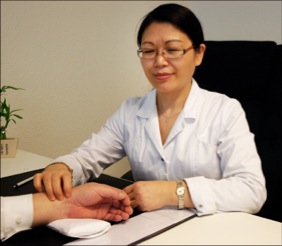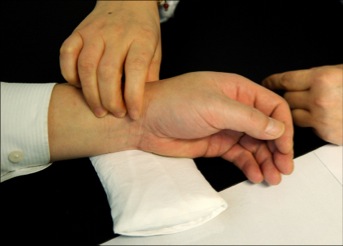Diagnosis
The diagnosis is a method to analyse a disease and gather information about the patient's condition. The main methods of diagnosis in traditional Chinese medicine is observation, auscultation, inquiry and palpation. They are called the four exams.
Observation: Face, eyes, nails, hair, breathing, emotional state, feces and other excretions, etc. Language is a major source of information, both by its volume, shape, colour, texture, and by the characteristics of the white coating that covers it.
Auscultation: Breath, voice, walk, etc.
Inquiry: Inquiry on discomfort, family history, sleep, appetite, etc.
Palpation: Texture, moisture, temperature and skin elasticity, muscle tone, tissue excitability, etc. The pulse is also a fundamental diagnostic method because it allows to examine the Qi. Indeed, thanks to the strength of the Qi that blood circulates. The practitioner takes three different pulse with three fingers on the artery of each wrist. The first pulse provides information on the chest, the second on the upper abdomen, the third on the lower abdomen. The left wrist corresponds with the Yin organs and right wrist, the Yang organs. Different characteristics are attributed to heart rate (fast, floating, powerful, weak, strong, fluid, drowning, etc.), Each index. Some features can be combined.
To interpret the data, the practitioner should refer to the eight guiding principles: Yin / Yang, Hot / Cold, Empty / Excess, Indoor / Outdoor. With these, he can determine the characteristics (status, quality, location) of Qi in the body. These features will enable him to prescribe or treatments are most appropriate, whether a change in diet, acupuncture, moxa or suction cup, etc.



